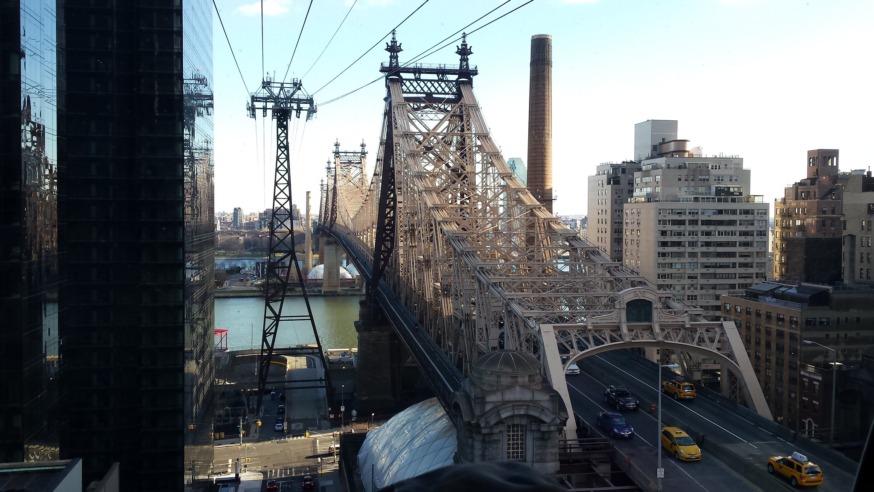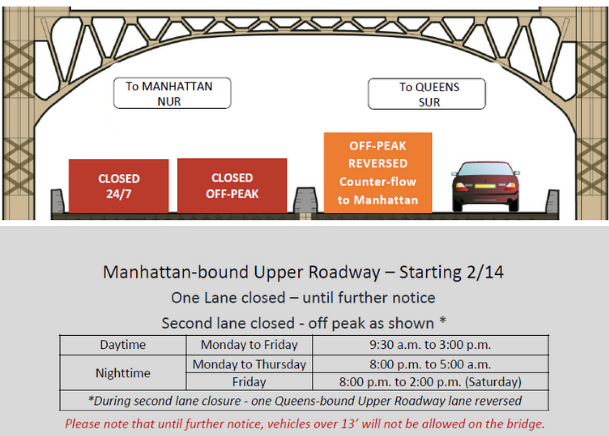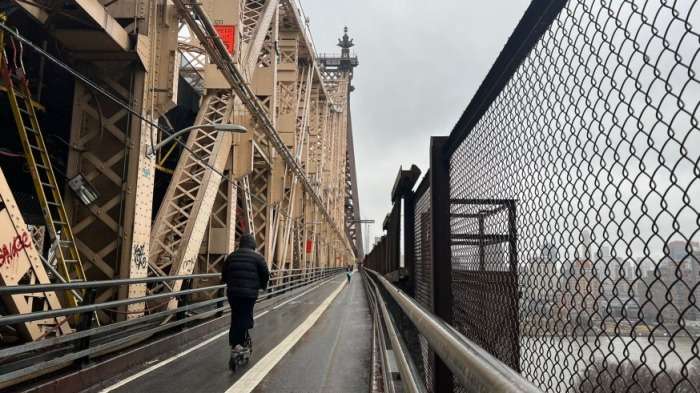
The Dept. of Transportation has begun major repair work on the Queensboro Bridge, pictured, which is expected to take until December 2023 to complete (Photo via NYCDOT Flickr)
Feb. 14, 2022 By Michael Dorgan
The Dept. of Transportation began major repair work on the Queensboro Bridge Monday and at least one vehicle lane is to remain closed for the entirety of the near two-year project.
The repair work, which is expected to take until December 2023 to complete, consists of replacing the bridge’s upper deck in order to extend its life span by up to 75 years, according to the DOT.
The repairs mean that at least one Manhattan-bound vehicle lane on the upper deck is now closed to motorists at all times in order for the DOT to store construction materials and equipment.
During off-peak periods, one additional Manhattan-bound traffic lane is to be closed on the upper deck. When this occurs, one of the existing Queens-bound lanes on the upper level will be reversed to run toward Manhattan, according to the DOT.
Off-peak daytime hours are Mondays through Fridays from 9:30 a.m. to 3 p.m.
Off-peak nighttime hours Mondays through Thursdays from 8 p.m. to 5 a.m. and on Fridays from 8 p.m. to 2 p.m. on Saturdays.
The DOT is calling on motorists to use alternative forms of transportation while the work is being carried out.
“Motorists are strongly encouraged to take mass transit or seek alternate routes as crews carry out the complete replacement of the 113-year-old bridge’s upper level,” the DOT said in a statement Friday.
The Queensboro Bridge opened in 1909 and is the busiest of the four DOT East River crossings with a daily traffic volume of around 170,000 vehicles.

(Poster via @NYC_DOT on Twitter)
The repair work primarily focuses on the replacement of the upper deck on the main bridge—although it also includes the replacement of deck joints and barriers on the upper roadway. Some of the other work includes drainage improvements, structural steel repairs and painting.
The overhaul means that the city’s plan to convert a car lane into a pedestrian pathway on the bridge will be delayed until at least 2024.
The DOT had pledged to convert a car lane on the southern outer roadway to a pedestrian pathway by 2022—in order to free up space on the northern outer roadway of the bridge which is currently shared by pedestrians and cyclists.
The delay has upset local politicians and bicycle safety advocates– who are calling on the DOT to expedite the repair work.

The existing pathway on the northern outer roadway, pictured, was scheduled to be repurposed for bicycles this year (Photo by Michael Dorgan, Queens Post)
One Comment

“The delay has upset local politicians and bicycle safety advocates– who are calling on the DOT to expedite the repair work.”
Who cares. They won’t be happy until private cars are illegal.